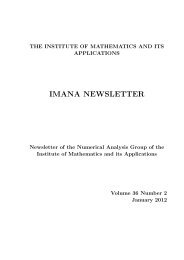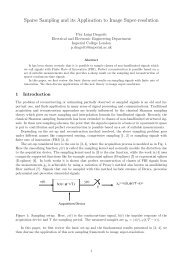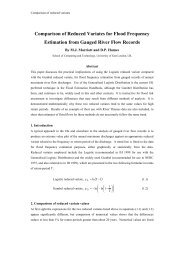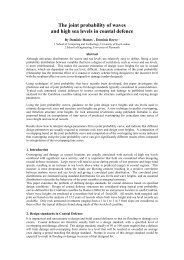Measuring the Inertia Tensor
Measuring the Inertia Tensor
Measuring the Inertia Tensor
You also want an ePaper? Increase the reach of your titles
YUMPU automatically turns print PDFs into web optimized ePapers that Google loves.
<strong>Measuring</strong> <strong>the</strong> <strong>Inertia</strong> <strong>Tensor</strong><br />
Huw Williams<br />
Visiting Professor of Ma<strong>the</strong>matics, Coventry University<br />
Presented at IMA Ma<strong>the</strong>matics 2007 Conference<br />
26 th April 2007
Introduction<br />
• This talk is based on a real industrial problem that I am<br />
currently involved in<br />
• The problem is not really new but it is still an active field<br />
in Engineering Science and Sports Science<br />
• Software continues to deliver more simulation capability<br />
but without accurate input data we may fall prey to <strong>the</strong><br />
“garbage in, garbage out”* syndrome or even as <strong>the</strong><br />
output becomes glossier “garbage in, gospel out”<br />
• Hopefully this talk will support <strong>the</strong> view that <strong>the</strong>re is<br />
interesting ma<strong>the</strong>matics to be found wherever we care to<br />
look<br />
* Coined by <strong>the</strong> late Stephen “Wilf” Hey, whose last published<br />
article covered network analysis using ideas from graph <strong>the</strong>ory, a<br />
subject founded by Euler<br />
Page 2
Agenda<br />
• What is <strong>the</strong> inertia tensor?<br />
• Why measure <strong>the</strong> inertia tensor?<br />
• How is <strong>the</strong> inertia tensor measured?<br />
• A novel solution to <strong>the</strong> inertia tensor<br />
measurement problem*<br />
• Some questions regarding <strong>the</strong> measurement of<br />
<strong>the</strong> inertia tensor<br />
*Due to Ian Kellaway of Jaguar Cars Ltd<br />
Page 3
What is <strong>the</strong> inertia tensor?<br />
• Basic concept<br />
• Ma<strong>the</strong>matical formulae<br />
• Special case: fixed axis of rotation<br />
Page 4
<strong>Inertia</strong> tensor – basic concept<br />
Particle<br />
m<br />
v<br />
p<br />
Rigid Body<br />
h<br />
p = m v<br />
h =<br />
J ω<br />
ω<br />
A rigid body is a collection of particles that has angular<br />
momentum h as well as linear momentum p. LM is a scalar<br />
multiple of <strong>the</strong> linear velocity but AM is a tensor multiple of <strong>the</strong><br />
angular velocity and need not lie in <strong>the</strong> same direction.<br />
Page 5
Page 6<br />
<strong>Inertia</strong> tensor – ma<strong>the</strong>matical formulae 1<br />
p m v<br />
=<br />
J ω<br />
h =<br />
⎥<br />
⎥<br />
⎥<br />
⎦<br />
⎤<br />
⎢<br />
⎢<br />
⎢<br />
⎣<br />
⎡<br />
=<br />
⎥<br />
⎥<br />
⎥<br />
⎦<br />
⎤<br />
⎢<br />
⎢<br />
⎢<br />
⎣<br />
⎡<br />
z<br />
y<br />
x<br />
z<br />
y<br />
x<br />
v<br />
v<br />
v<br />
m<br />
v<br />
p<br />
p<br />
⎥<br />
⎥<br />
⎥<br />
⎦<br />
⎤<br />
⎢<br />
⎢<br />
⎢<br />
⎣<br />
⎡<br />
⎥<br />
⎥<br />
⎥<br />
⎦<br />
⎤<br />
⎢<br />
⎢<br />
⎢<br />
⎣<br />
⎡<br />
=<br />
⎥<br />
⎥<br />
⎥<br />
⎦<br />
⎤<br />
⎢<br />
⎢<br />
⎢<br />
⎣<br />
⎡<br />
z<br />
y<br />
x<br />
zz<br />
zy<br />
zx<br />
yz<br />
yy<br />
yx<br />
xz<br />
xy<br />
xx<br />
z<br />
y<br />
x<br />
J<br />
J<br />
J<br />
J<br />
J<br />
J<br />
J<br />
J<br />
J<br />
h<br />
h<br />
h<br />
ω<br />
ω<br />
ω
<strong>Inertia</strong> tensor – ma<strong>the</strong>matical formulae 2<br />
J<br />
∫V<br />
[( ⋅ ) − ⊗ ]dm<br />
= r r I r r<br />
J<br />
( = ∫ y<br />
2<br />
+ z<br />
2<br />
)dm<br />
xx<br />
V<br />
J<br />
yz<br />
=<br />
J<br />
zy<br />
= −<br />
∫<br />
V<br />
yz dm<br />
J<br />
( = ∫ z<br />
2<br />
+ x<br />
2<br />
)dm<br />
yy<br />
V<br />
J<br />
zx<br />
=<br />
J<br />
xz<br />
= −<br />
∫<br />
V<br />
zx dm<br />
J<br />
( = ∫ x<br />
2<br />
+ y<br />
2<br />
)dm<br />
zz<br />
V<br />
J<br />
xy<br />
=<br />
J<br />
yx<br />
= −<br />
∫<br />
V<br />
xy dm<br />
I<br />
Page 7<br />
is <strong>the</strong> (3x3) identity tensor
<strong>Inertia</strong> tensor - special case: fixed axis of rotation<br />
J<br />
=<br />
n ⋅<br />
( J n )<br />
is <strong>the</strong> moment of inertia,<br />
where n is a unit vector along <strong>the</strong> fixed axis of rotation.<br />
Some useful special cases are when <strong>the</strong> axis is aligned, in<br />
turn, with <strong>the</strong> coordinate axes:<br />
Page 8<br />
( ) J<br />
xx<br />
J = i ⋅ J i =<br />
( ) J<br />
yy<br />
J = j ⋅ J j =<br />
( ) J<br />
zz<br />
J = k ⋅ J k =<br />
which can be used to find <strong>the</strong> diagonal elements of J
<strong>Inertia</strong> tensor - special case: fixed axis of rotation<br />
The off-diagonal elements can be arrived at through<br />
considering<br />
n =<br />
1<br />
( j + k )<br />
2<br />
n =<br />
1<br />
( k + i)<br />
2<br />
n =<br />
1<br />
( i + j)<br />
2<br />
Page 9<br />
1<br />
J = J + +<br />
yz<br />
yy<br />
2<br />
( ) J J<br />
1<br />
J = J +<br />
zx<br />
2<br />
+<br />
zz<br />
1<br />
J = J +<br />
xy<br />
2<br />
+<br />
xx<br />
zz<br />
( J J )<br />
xx<br />
( ) J J<br />
These formulae are useful in measuring <strong>the</strong> inertia tensor<br />
yy
Why measure <strong>the</strong> inertia tensor?<br />
• It is fundamental to <strong>the</strong> dynamic properties of vehicles<br />
(especially space vehicles) and <strong>the</strong>ir components<br />
– e.g. <strong>the</strong> EU-sponsored INPROP project<br />
• CAE (computer aided engineering) models need<br />
accurate inertia properties if <strong>the</strong>y are to make valid<br />
predictions<br />
– e.g. vehicle safety analysis (show movie)<br />
• Sports governing bodies and sports equipment<br />
manufacturers are using inertia tensor measurements<br />
– e.g. <strong>the</strong> polar moment of inertia of golf clubs is restricted<br />
because club manufacturers have been using it to reduce <strong>the</strong><br />
likelihood of poor shots due to off-centre contact with <strong>the</strong> ball<br />
Page 10
How is <strong>the</strong> inertia tensor measured?<br />
• Moments of inertia (diagonal elements) are typically<br />
measured by attaching <strong>the</strong> body to a rotating table and<br />
measuring <strong>the</strong> period of torsional oscillations due to<br />
stored energy (can be elastic or gravitational)<br />
– e.g. golf club head MOI machine, trifilar pendulum<br />
• Products of inertia (off-diagonal elements) can be<br />
measured by spinning <strong>the</strong> body and measuring <strong>the</strong><br />
torque produced or by measuring <strong>the</strong> moment of inertia<br />
for different orientations of <strong>the</strong> body and using <strong>the</strong><br />
formulae already given<br />
Page 11
A novel solution to <strong>the</strong> inertia tensor<br />
measurement problem<br />
Mounting <strong>the</strong> test piece in a rhombicuboctahedral frame<br />
allows trifilar suspension (on <strong>the</strong> square faces) on <strong>the</strong><br />
coordinate axes and <strong>the</strong>ir 45 degree intermediates making it<br />
possible to determine <strong>the</strong> inertia tensor using <strong>the</strong><br />
ma<strong>the</strong>matical formulae<br />
Page 12
Rombicuboctahedron<br />
Graphics from Wikipedia<br />
Page 13<br />
Euler would<br />
have been 300<br />
on 15 th April and<br />
this is one of<br />
many topics that<br />
bear his imprint
Some questions regarding <strong>the</strong> measurement of<br />
<strong>the</strong> inertia tensor with a trifilar pendulum<br />
• What are <strong>the</strong> assumptions implicit in <strong>the</strong> formula for <strong>the</strong><br />
period of oscillation and what happens if <strong>the</strong>y are not fully<br />
satisfied?<br />
• What happens if <strong>the</strong> upper and lower triangles are<br />
equilateral but of differing dimensions?<br />
• How does <strong>the</strong> golf club regulatory device work?<br />
Page 14
Trifilar pendulum assumptions<br />
• The motion is purely torsional<br />
– There is no swaying motion<br />
• The combined test piece is rotating about a principal axis<br />
of inertia<br />
– i.e. <strong>the</strong>re are no products of inertia that could generate torques<br />
that could disturb <strong>the</strong> motion<br />
• The suspending wires are sufficiently stiff to make <strong>the</strong><br />
contribution to <strong>the</strong> motion from any elastic modes of<br />
vibration insignificant<br />
• The centre of gravity of <strong>the</strong> combined test piece is at <strong>the</strong><br />
centre of <strong>the</strong> pendulum’s triangle<br />
Page 15
Basic Trifilar pendulum <strong>the</strong>ory<br />
Assuming small angles<br />
θ<br />
L<br />
ψ<br />
r<br />
L<br />
r ψ = Lθ<br />
ψ<br />
r<br />
h<br />
1<br />
h = Lθ<br />
2<br />
=<br />
2<br />
1<br />
2<br />
r<br />
2<br />
L<br />
ψ<br />
2<br />
Page 16
Basic trifilar pendulum <strong>the</strong>ory<br />
Introducing <strong>the</strong> lagrangian<br />
1<br />
L = J &<br />
2<br />
Page 17<br />
ψ<br />
2<br />
−<br />
1<br />
2<br />
mgr<br />
L<br />
2<br />
ψ<br />
and using <strong>the</strong> Euler-Lagrange equations<br />
d<br />
dt<br />
⎛<br />
⎜⎜<br />
⎝<br />
∂L<br />
∂<br />
&<br />
ψ<br />
it follows that<br />
J &<br />
⎞<br />
⎟⎟ −<br />
⎠<br />
mgr<br />
2<br />
∂L<br />
∂<br />
ψ<br />
ψ + ψ<br />
L<br />
=<br />
= 0<br />
0<br />
2
Basic trifilar pendulum <strong>the</strong>ory<br />
Hence <strong>the</strong> angular frequency of <strong>the</strong> oscillations is given by<br />
ω 2 =<br />
mgr 2<br />
L J<br />
and <strong>the</strong> period of oscillation is<br />
T<br />
=<br />
2<br />
π<br />
L J<br />
mgr<br />
2<br />
from which J can be found given <strong>the</strong> period that can be<br />
measured directly<br />
Page 18
Different sized triangles<br />
R<br />
In this case (for small angles)<br />
h =<br />
1<br />
2<br />
R r<br />
L<br />
ψ<br />
2<br />
L<br />
T<br />
= 2π<br />
L J<br />
mgR r<br />
ψ<br />
r<br />
h<br />
This idea is not recommended<br />
because any error in <strong>the</strong><br />
alignment of <strong>the</strong> centre of gravity<br />
would cause <strong>the</strong> test piece to tilt<br />
Page 19
Advanced trifilar pendulum <strong>the</strong>ory<br />
This formula holds even if <strong>the</strong><br />
triangle is not equilateral and <strong>the</strong><br />
centre of gravity is noncentral<br />
The derivation is quite interesting<br />
and can be made ra<strong>the</strong>r elegant but<br />
is too long to enter into here<br />
T<br />
= 2π<br />
Page 20<br />
mgr<br />
L J<br />
r<br />
r<br />
sinθ<br />
+<br />
sinθ<br />
2 3 1 3 1 2 1 2<br />
1r2<br />
r3<br />
r1<br />
sinθ1<br />
+ r2<br />
sinθ<br />
2 + r3<br />
sin<br />
r<br />
r<br />
+<br />
r<br />
r<br />
sinθ<br />
θ<br />
3<br />
3
Measurement robustness<br />
• The formula given on <strong>the</strong> previous slide can be used to<br />
analyse <strong>the</strong> experimental error and tolerance <strong>the</strong><br />
experiment to ensure <strong>the</strong> desired accuracy<br />
• In practice <strong>the</strong> wires are long and <strong>the</strong> amplitude of<br />
oscillation very small (of <strong>the</strong> order of 10 mrad) so <strong>the</strong><br />
assumptions hold true and <strong>the</strong> separation between sway<br />
modes, <strong>the</strong> torsional mode and <strong>the</strong> modes due to <strong>the</strong><br />
wire elasticity is large enough to prevent non-principal<br />
axes of rotation causing an issue<br />
• The angular velocity is also kept very small thus avoiding<br />
any untoward effects from gyroscopic torques<br />
Page 21
Golf club inertia properties<br />
The USGA has been conducting research into <strong>the</strong> effects of<br />
moment of inertia. Moment of inertia in driver heads has<br />
approximately tripled since 1990, about <strong>the</strong> time of <strong>the</strong><br />
introduction of <strong>the</strong> first oversized drivers. In simplest terms,<br />
moment of inertia relates to a clubhead's resistance to twisting<br />
on off-center hits. A club with a high moment of inertia can be<br />
said to be more forgiving of hits away from <strong>the</strong> center of <strong>the</strong><br />
face.<br />
"The USGA is concerned that any fur<strong>the</strong>r increases in<br />
clubhead moment of inertia may reduce <strong>the</strong> challenge of <strong>the</strong><br />
game," <strong>the</strong> memo reads. "The USGA is conducting this<br />
research to determine whe<strong>the</strong>r a limit on moment of inertia<br />
should be established."<br />
Page 22
Golf club measurement<br />
From <strong>the</strong> USGA and R&A measurement procedure<br />
Page 23
Golf club measurement<br />
The measurement is done on an air bearing torsion machine<br />
ra<strong>the</strong>r than a trifilar rig but <strong>the</strong> principles are similar. The<br />
measurement is done with <strong>the</strong> clubhead in nine different<br />
locations so that <strong>the</strong> combined centre of gravity of <strong>the</strong> jig and<br />
clubhead moves around. The moment of inertia is given by<br />
J<br />
=<br />
J<br />
+ J + +<br />
jig jig<br />
c lub<br />
( ) m m r<br />
2<br />
c lub<br />
where r is <strong>the</strong> distance from <strong>the</strong> combined cg to <strong>the</strong> axis of<br />
rotation and <strong>the</strong> parallel axis <strong>the</strong>orem has been used.<br />
A simple regression of J against r 2 gives <strong>the</strong> combined MOI as<br />
<strong>the</strong> intercept and <strong>the</strong> combined mass as <strong>the</strong> slope.<br />
Page 24
Golf club measurement<br />
J<br />
Page 25<br />
r<br />
2
Summary<br />
• Measurement of inertia properties remains an<br />
active research field<br />
• The trifilar pendulum method is still a good<br />
choice<br />
• Interesting ma<strong>the</strong>matics can be found<br />
everywhere<br />
Page 26
Conclusion<br />
• Thank you for your participation<br />
• Are <strong>the</strong>re any questions?<br />
Page 27
The INPROP project<br />
Page 28
Trifilar Pendulum<br />
Crede, Charles E., "Determining Moment of <strong>Inertia</strong>", Machine Design , August,<br />
1948, pp. 138.<br />
Page 29
Leonhard Euler<br />
Now Euler was great in his own sort of way,<br />
The results that he found were quite good for his day,<br />
But among all his work lies one gem that excels,<br />
That plucks at <strong>the</strong> heart strings,<br />
<strong>the</strong> proud spirit swells,<br />
To <strong>the</strong> prophet, <strong>the</strong> thinker, <strong>the</strong> mystic , <strong>the</strong> sage,<br />
To <strong>the</strong> white-bearded hermit bent double with age,<br />
Inexpressible solace one formula brought,<br />
Namely, e to <strong>the</strong> pi i + 1= nought.<br />
Page 30<br />
Sources: Wikipedia and <strong>the</strong> Archimedean



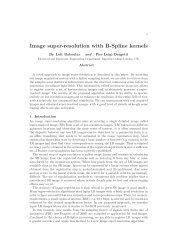

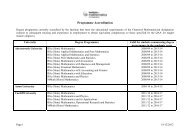
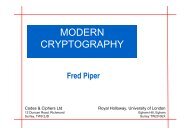
![Download NLAO Application Form [PDF] - Institute of Mathematics ...](https://img.yumpu.com/22617151/1/184x260/download-nlao-application-form-pdf-institute-of-mathematics-.jpg?quality=85)
![Download Education Grants Application Form [PDF] - Institute of ...](https://img.yumpu.com/22617149/1/184x260/download-education-grants-application-form-pdf-institute-of-.jpg?quality=85)
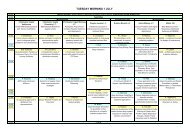
![IMA IPD brochure [PDF] - Institute of Mathematics and its Applications](https://img.yumpu.com/22617139/1/189x260/ima-ipd-brochure-pdf-institute-of-mathematics-and-its-applications.jpg?quality=85)

